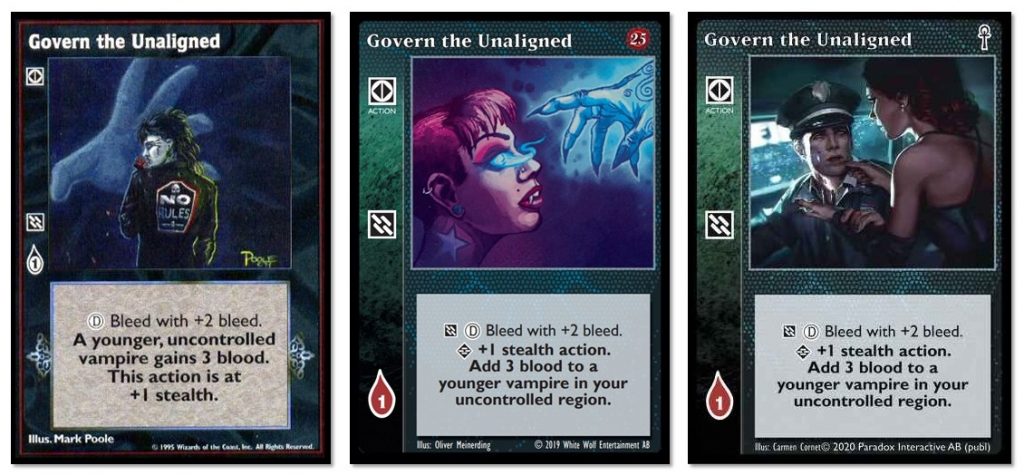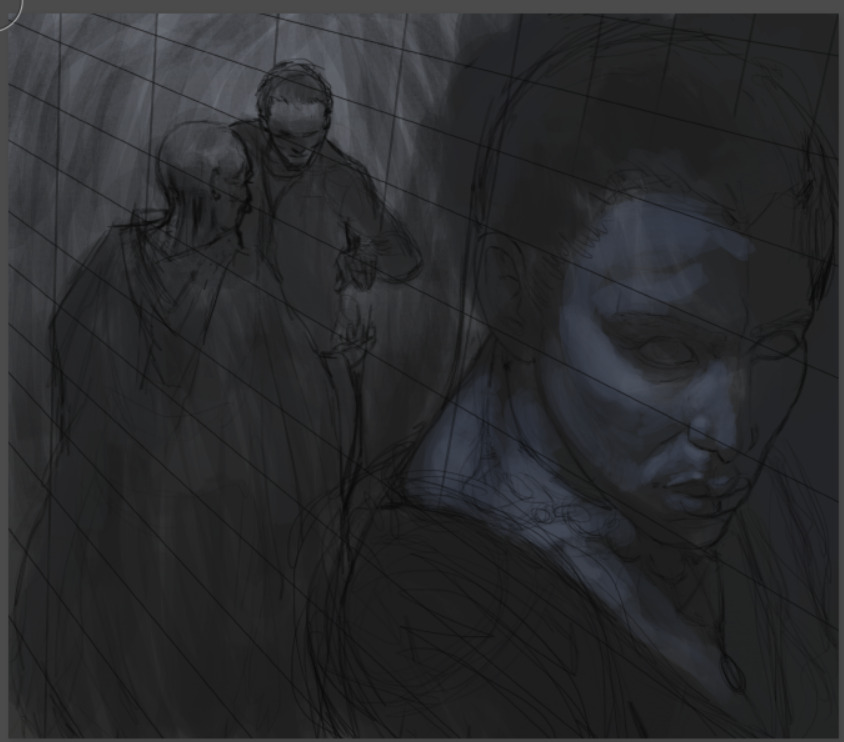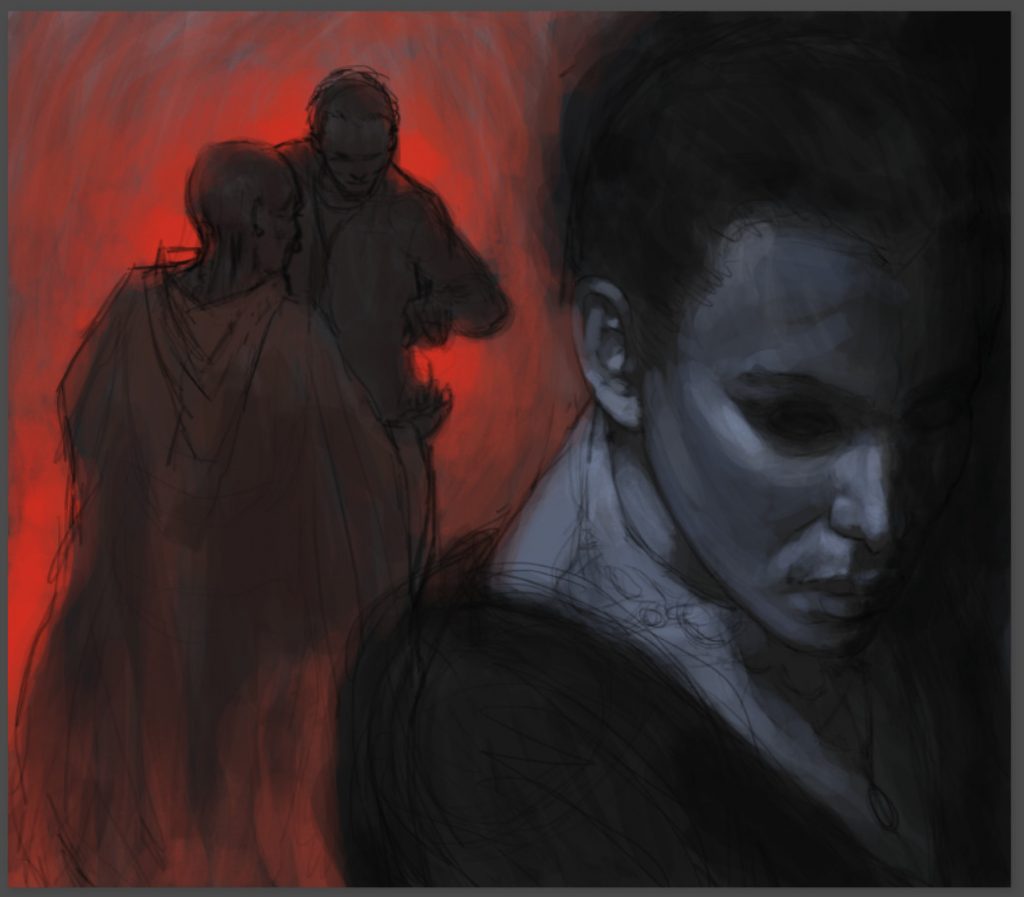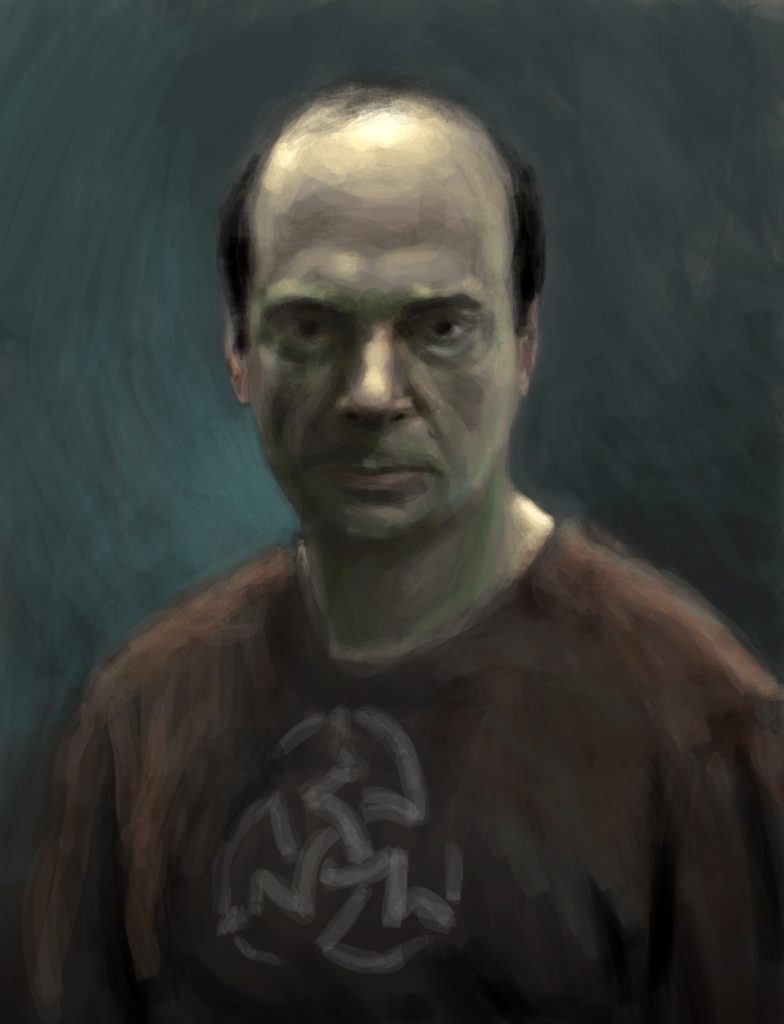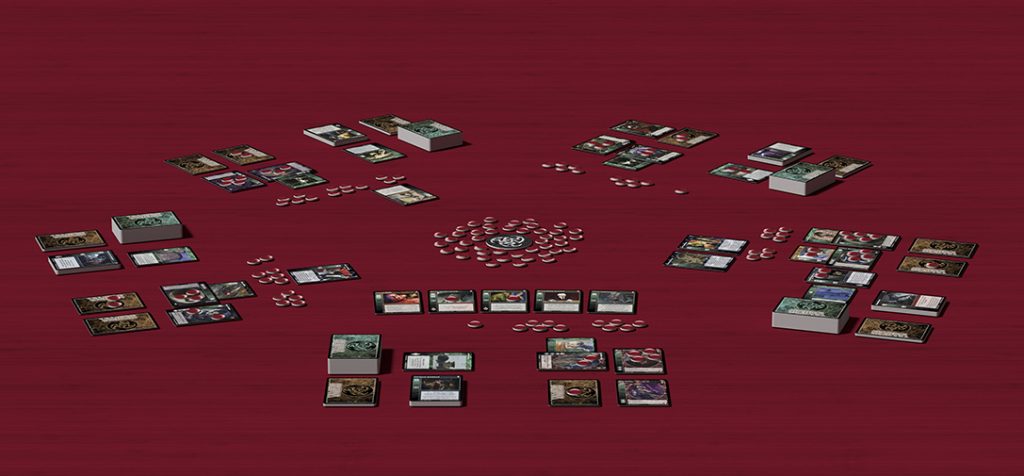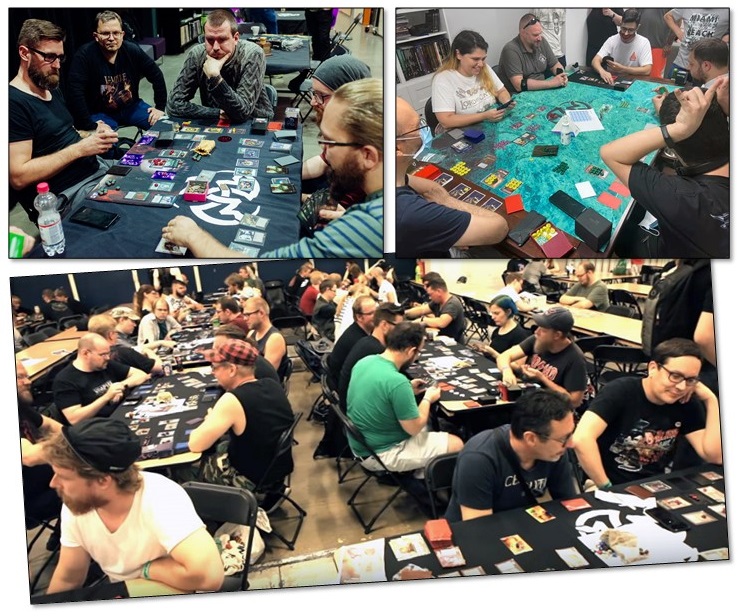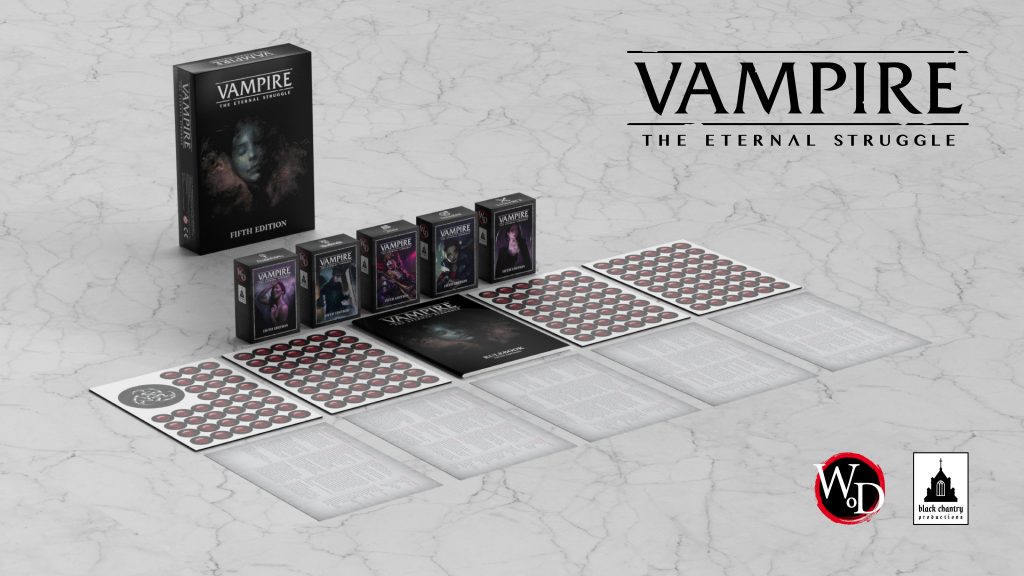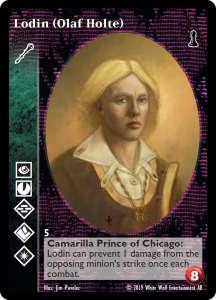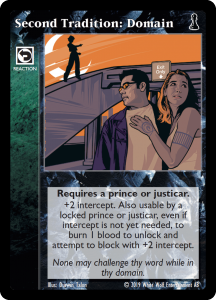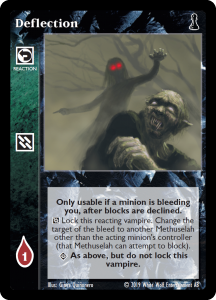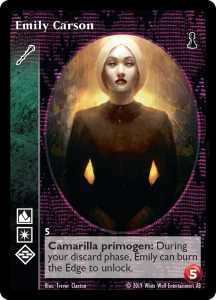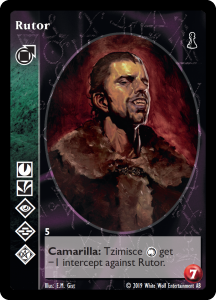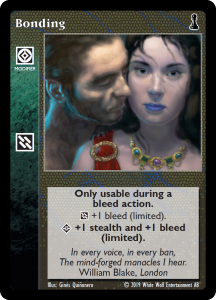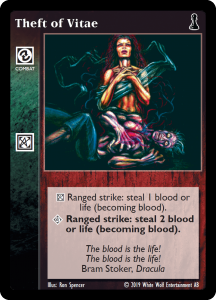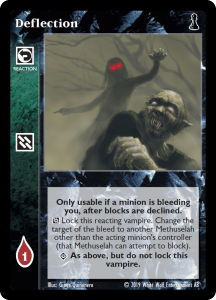Fifth Edition now in stores – Lead designer Ben Peal explains design goals and talks about future products

Vampire: The Eternal Struggle Fifth Edition is now available all over the world. The new box set is both playable as a stand alone game AND compatible with any older cards, so the creation was a challenge. We asked the lead designer Ben Peal, also Product Director at Black Chantry Productions, a couple of questions…
What was the general design idea of Vampire: The Eternal Struggle Fifth Edition?
– We had a lot of design goals for this box set. The biggest one was to create a quality, replayable Vampire: The Eternal Struggle experience within the contents of the box itself. As such, we wanted the decks to have solid themes, to be effective, and to be reasonably balanced amongst each other.
We also had goals with respect to thinking “outside the box”. We wanted the decks in the set to be individually useable in games with your local playgroups. The contents of the deck also serve as a toolbox for building your own decks, as they provide the bulk of the core cards you’ll need.
There has also been growing demand from the player community for a new, alternate tournament format for the game, using only newer cards. Vampire: The Eternal Struggle Fifth Edition also serves to lay the foundation for that format, including the introduction of Group 6 Camarilla vampires. Don’t worry, the existing Standard Constructed format will remain in place – the new format will provide an option for both newer and veteran communities to work with a more manageable pool of cards.
Additional design goals included updating card texts to reflect the new rulebook and current rulings, reprinting needed cards that have been more difficult to acquire, and the creation of some new library cards to bolster some areas of deficiency, particularly with the Nosferatu clan.
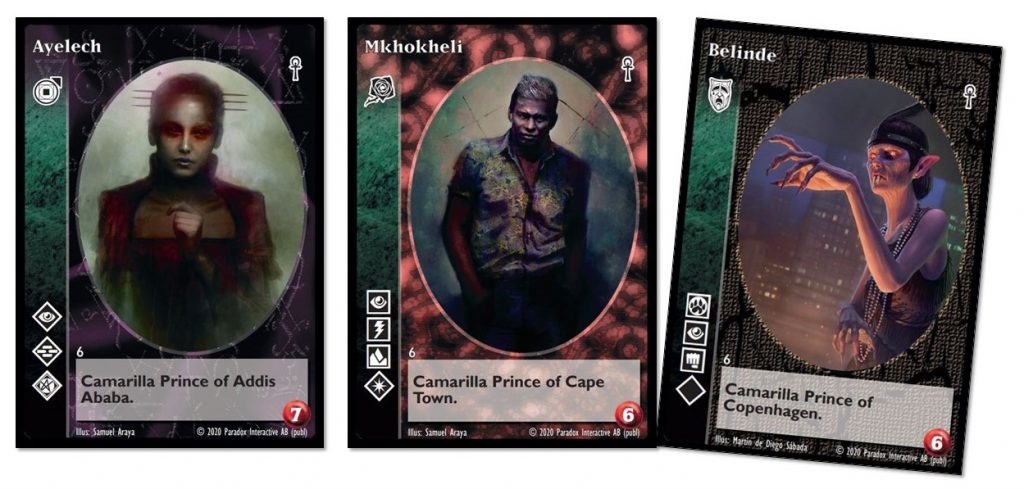
What was the goals concerning the actual vampires, the crypt cards?
– I certainly invite you all to read the core books for Vampire: The Masquerade Fifth Edition, as they serve to inform Vampire: The Eternal Struggle of the overall metaplot and the shape of things to come. The emergence of the Gehenna War, the Beckoning, the Second Inquisition, and the resulting collapses and abandonments of many Kindred domains have resulted in power vacuums that will inevitably be filled. We’ve begun that process in Fifth Edition Vampire: The Eternal Struggle with the introduction of many new Kindred who will establish the new core of the Camarilla in our game.
One of our goals with Vampire: The Eternal Struggle Fifth Edition – and looking forward from that – is to bring the “world” back into the “World of Darkness”. Kindred society always lurks in the shadows behind the Kine. As such, we’re expanding the scope of Kindred domains to include more regions around the globe. This will continue with subsequent expansion of the Camarilla as well as their conflicts and clashes with the Anarchs. Some of the characters in our Fifth Edition are drawn from the current sourcebooks for Vampire: the Masquerade while some are newly introduced through Vampire: The Eternal Struggle.

A new year is here – what’s next for Vampire: The Eternal Struggle?
– We have a very busy schedule coming up for 2021! Right around the beginning of spring we’ll have two releases. The first is a mini-expansion about the Fall of London, based on the recent Vampire: the Masquerade sourcebook. Mike Nudd is the design lead for that one as he is also one of the writers of the Fall of London book!
The other release is the next wave of preconstructed decks: Brujah, Gangrel, Banu Haqim, and the Ministry. These will reflect the developments in Vampire: The Masquerade, with Brujah and Gangrel leaving the Camarilla to join the Anarchs. In an event known as the Vermillion Wedding, the Banu Haqim (formerly known as the Assamites) joined the Camarilla through the marital union of Tegyrius and Victoria Ash. The Ministry (formerly known as the Followers of Set) attempted to join the Camarilla but were prevented from doing so, with rumors of sabotage interfering with their efforts. Licking their wounds they chose to cast their lot with the Anarchs.
With the releases of Vampire: The Eternal Struggle Fifth Edition and the upcoming preconstructed decks, we’ll need to round out the crypts for the respective clans and give them more depth. We’ll also want to further develop their library options and explore the developments in the story for Vampire: the Masquerade. We’re now in development of a follow-up set to cover all of this and we’re aiming for a Q3 release. We understand that we’ve been feeding you a steady diet of preconstructed decks, so we’ll be changing things up for this release, likely in the form of smaller, fixed-content bundles.

Of course, a new wave of promo cards is coming, as well. They’re designed and we’re in the middle of procuring artwork for them. The original plan for their release was to coincide with the 2021 season of continental championships. However, as we’re all still waiting to get our Covid-19 vaccines so we can meet up and play in person, we’ll look to get these released when larger events can take place.
Likewise, the replacement cards for the cards which were banned over the summer have been designed and artwork is coming in for them. We’ll have a clearer picture on their release in the coming months but it will be a mixture of cards in new release bundles and as print-on-demand at Drivethrucards.com.
Another wave of legacy reprints is coming to Drivethrucards, as well. We’re waiting for the arrival of the printing proofs for the Followers of Set, Giovanni and Lasombra bundles. Once those are received and approved, we’ll make those bundles available immediately. Look for them towards the end of this January. Work has begun on the next wave updating templates and art as required.
Lastly, we’ve received approval for publishing the previously PDF-only sets released by the Vampire: Elder Kindred Network as a legacy set. We’re in the middle of getting some new artwork to replace some of the pieces. Once all that’s received we can get these out as a physical product.
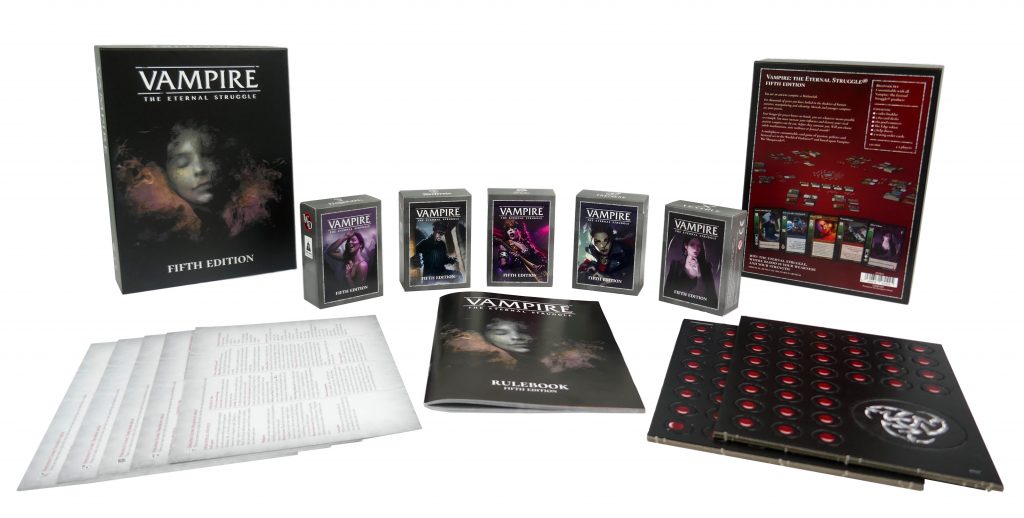
Vampire: The Eternal Struggle Fifth Edition is available for all stores and distributors. For more information please visit www.blackchantry.com. Contact us by mail or social media.
RELATED:
– Complete decklists and previews from the Fifth Edition decks
– The delicate art of Vampire: The Eternal Struggle
– Interview with original designer Richard Garfield
– Rulebook for download
– Rules Team Rulings with Fifth Edition rulebook addendum
Copyright © 2025 Paradox Interactive AB. www.paradoxinteractive.com. All rights reserved. Vampire: The Eternal Struggle and Vampire: The Masquerade® are trademarks and/or registered trademarks of Paradox Interactive AB. All rights reserved.



